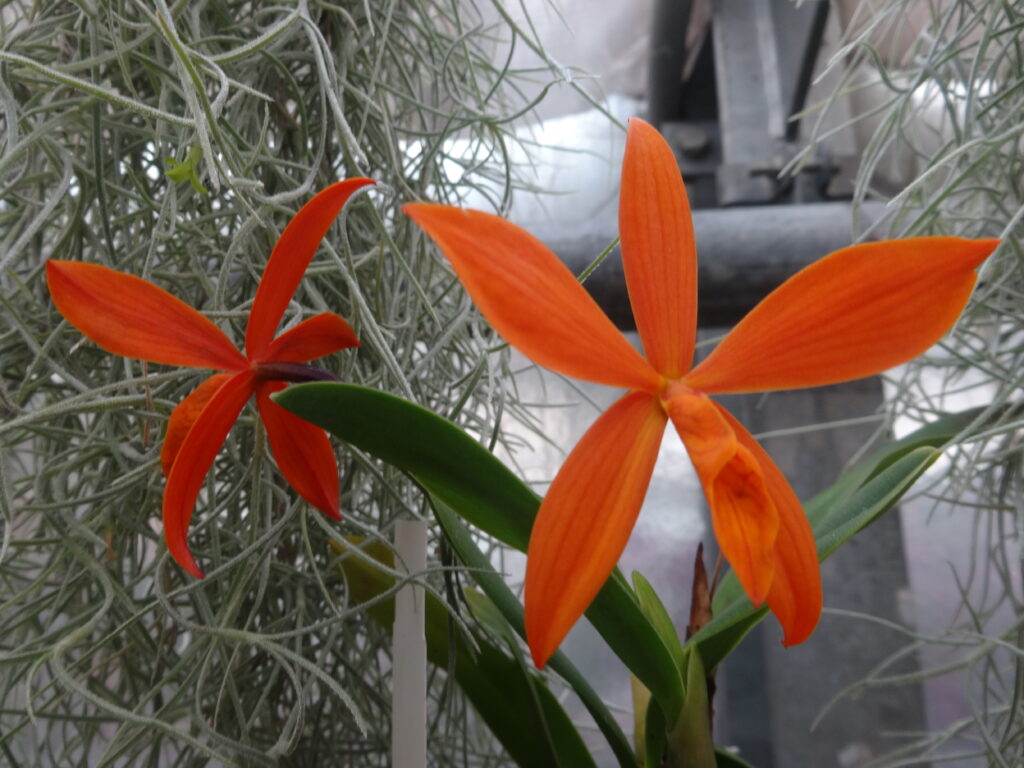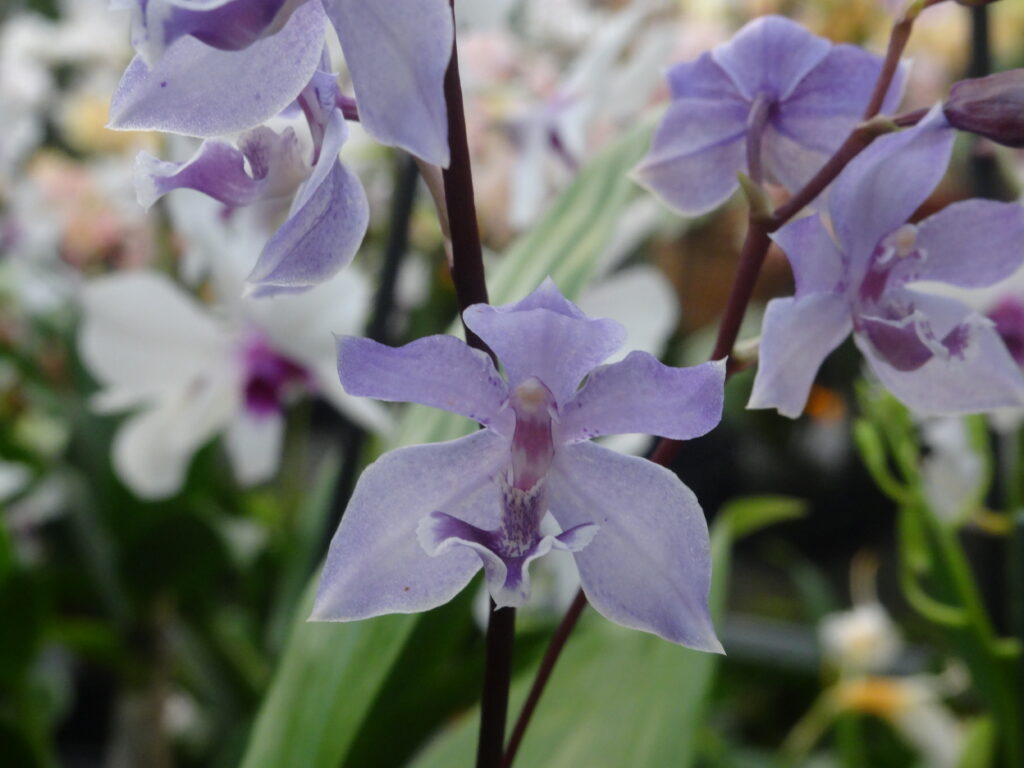The days are slowly getting longer and soon the sub-zero temperatures of this winter will be history. Our orchids also long for the more light and warmth in March, April and May. Therefore, now is the ideal time to make them fit for spring. In this article, I will give you valuable suggestions and tips for this.
Contents
Root care and fresh substrate
When spring knocks on the door, most orchids have already passed their main flowering period. They are now adjusting to a period of leaf and root growth. This is the ideal time to give them fresh substrate and to take this opportunity to check the roots.
If you have already repotted your orchids in fresh substrate within the last two years, you can skip this step. But it still doesn’t hurt to check the roots.
Carefully lift the orchid and its roots out of the substrate. If you discover dried out or muddy, dead roots, simply cut them off with a pair of sharp scissors or a knife. This will give the orchid more room to grow fresh, intact roots.
You can read how to repot your orchid step by step in my repotting instructions. Once all defective roots have been removed and the orchid is sitting in fresh substrate or even its not too old substrate, it can start growing roots.
Remove old flower shoots
Many orchids have already passed their main flowering period in the spring. Therefore, now is a good time to remove the old flower shoots. So everything that is brown and dried up and does not pay rent as far as possible cut off at the bottom of the stem and dispose of it.
This not only makes the orchid look much nicer right away, but also gives it room to form and grow new flower shoots. But beware: Revolving bloomers such as the lady’s slipper Paphiopedilum Pinocchio will continue to bloom on one flower sprout. So please do not simply cut off this flowering shoot!
Give the leaves a fresh treatment
The leaves also enjoy a beauty treatment in spring. If they are freed from dust, lime residues and similar dirt, they can use the light of the longer days particularly well for their energy metabolism.
If you have a lot of orchids, you can simply put them all together in the bathtub and shower them off with lukewarm water and a shower spray that is not set too hard. Afterwards, however, please make sure that no water remains in the leaf axils, i.e. the places where the leaves lie against the stem. Otherwise, this can quickly lead to stem rot and the death of the plants.
Another variation is to wipe the leaves of the orchids one by one with a damp cloth until dust and dirt are removed. This also really brings out the fresh, green color of the leaves. Of course, the leaves should be pampered in this way not only in the spring, but now it is especially important.

Adjust watering and fertilizer in spring
More light and higher temperatures, plus the large amount of energy that plants expend on new leaves and roots – all this has an impact on water requirements. This tends to increase over the course of the year. However, it is not advisable to simply give water more often across the board or to dip the orchids more often across the board.
I recommend, to check the water requirement, to briefly lift the orchid in its plastic planter. If it is quite light and the roots are silvery in Phalaenopsis orchids, it is time for the next root water bath. If there is still residual moisture in the pot, you can wait a few more days before watering.
For its growth, the orchid also needs sufficient nutrients and minerals, which it gets from fertilizers. In general, however, orchids need much smaller amounts of fertilizer compared to other plants. It is therefore essential to use special orchid fertilizer and to dose it low to avoid overfertilization.
In spring, however, you can add small amounts of fertilizer to each watering. Exception: freshly repotted orchids. Since orchid substrate is usually pre-fertilized, it is recommended to wait at least four weeks before fertilizing again.
Optimize the sun protection
From about the beginning to the middle of March it becomes risky for orchids on the windowsill. This is because the sun now has immense power again.
As soon as you are not careful, the sunburn on the orchid leaves is already there. In general, orchids should not be exposed to direct midday sun from spring onwards. Morning and evening sun are often well tolerated.
The first sign of too much sunlight is yellowing leaves. If you intervene quickly and protect the plants from the sun – you can find ideas for this in my article on sunburn – the leaves usually regain their green color completely. However, once a leaf is really burned, the affected tissue will not recover and unsightly spots will remain until the leaf dies.
In general, therefore, the tip: avoid south-facing windows for orchids from spring onwards, or shade them well. On east and west windows, early morning and late evening sun is usually well tolerated. North windows are almost always too dark and therefore rather unsuitable for orchids all year round.

To a good orchid year
Those were my tips for the start of spring. I wish you a lot of fun with the “spring cleaning” of your orchids and above all a great orchid year with many beautiful, colorful flowers! Further suggestions on the topic you can post as a comment under the post.


